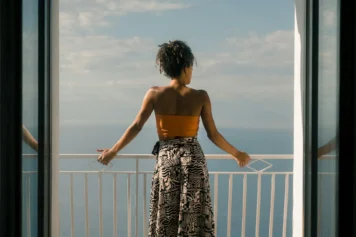The historic city of Santa Fe and the artist — and ski bum — haven of Taos get all the love when New Mexico is mentioned. But Albuquerque? Until the hit TV show Breaking Bad came along, I’m guessing most travelers didn’t even give the state’s largest city a second thought, and those who did were just trying to figure out how to get from the airport to some place else. Too bad they didn’t know: Albuquerque is one of the West’s most unique cities, a relaxed but quietly interesting town that deserves a lot more attention. If you haven’t visited it lately, or ever, please do stop by. Here’s what I like best about this city on Route 66.
Multicultural before it was hip
There are precious few places in the United States that remain almost completely true to their heritage; New Orleans is a famous example, but New Mexico’s up there, too. Albuquerque is one of those cities where you show up and think, what is everyone doing here? Answer: Same thing they have been for centuries – being New Mexicans.
Officially founded in 1706, Albuquerque is the newbie around these parts. Matter-of-factly multicultural, the city got its start in what’s now known, appropriately, as Old Town; at the neighborhood’s center stands the church of San Felipe de Neri. Join the faithful at morning mass – at 7:00 a.m., every day except Thursdays and Saturdays – and soak up the seriously old school vibe. You don’t have to be Catholic to be impressed.
History, culture, coffee
The pilgrims? Brash young upstarts. When the Brits washed ashore at Plymouth Rock, what we now know as New Mexico was already quite the happening spot, what with its many active pueblos; the Spaniards were all over the place, too.
Go back in time at the Petroglyph National Monument; just a short hop west of the Rio Grande, hiking trails show off the more than 20,000 carved images that date back to 700 years ago. Back in town, the Indian Pueblo Cultural Center offers an immersive experience in the region’s rich heritage – the on-site café is a great place for people who prefer to do their learning about cultures by eating.
No visit to the city is complete without a stop in downtown-adjacent Barelas, one of the city’s oldest barrios; check out the art galleries, catch a play or a concert at the National Hispanic Cultural Center. While here, make sure to drop in on the Barelas Coffee House, a neighborhood institution famous for their menudo; it’s a firm favorite with the local power crowd (1502 4th St. SW).
A surprising cool factor
In a city where families stay for generations, things don’t change all that quickly. But every once in a while, surprises pop up — on a once-grim stretch of Central Avenue in what’s known as the EDo, or East Downtown neighborhood, everything’s kind of nifty these days. Sip a Martinez at the Apothecary Lounge inside the handsome Parq Central hotel (rated numero uno on TripAdvisor), or stop by the Grove Café & Market for a croque madame breakfast sandwich (600 Central Ave. SE) and soak it all in. A few blocks west, in downtown proper, one of Conrad Hilton’s first properties, a handsome thing built in the 1930s, is now the very pleasant Hotel Andaluz. On Gold Street, grab a civilized espresso – extracted from the sleek Faema machine – at Café Giuseppe (222 Gold St. NW); in season, hit the Grower’s Market in Robinson Park. It’s not like the city’s going to be the next San Francisco tomorrow, but in a way, this is nicer.
Read more: George Hobica, HuffingtonPost


